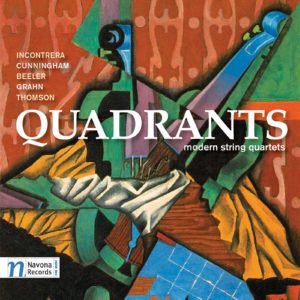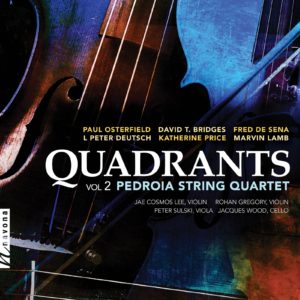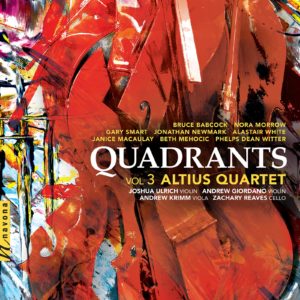Quadrants Vol. 4
Judith Lang Zaimont composer
Sami Seif composer
John Summers composer
Jacob E. Goodman composer
Daniel Gil composer
The Harlem Quartet
Elless Quartet
Sirius Quartet
Benda Quartet
Invoke
QUADRANTS VOL. 4 comes as the fourth installment of Navona’s acclaimed series of string quartet recordings by contemporary composers. This time, a variety of ensembles perform a selection of pieces by Daniel Gil, Jacob E. Goodman, John Summers, Sami Seif, and Judith Lang Zaimont. Like its predecessors, QUADRANTS VOL. 4 presents musical creations that are highly structured, thoroughly conceptualized and profoundly cerebral, drawing upon subject matters as diverse as Kabbalistic philosophy, English urban poetry, and Arabic cultural identity, among others. Often the result of years-long toil, these compositions are by no means easy to perform – but each ensemble masterfully succeeds with virtuosic panache.
Listen
Stream/Buy
Choose your platform
Track Listing & Credits
| # | Title | Composer | Performer | |
|---|---|---|---|---|
| 01 | String Quartet, The Figure: I. In Shadow | Judith Lang Zaimont | Harlem Quartet | Ilmar Gavilán, Melissa White - violin; Juan-Miguel Hernandez, viola; Paul Wiancko, cello | 8:29 |
| 02 | String Quartet, The Figure: II. In Bright Light | Judith Lang Zaimont | Harlem Quartet | Ilmar Gavilán, Melissa White - violin; Juan-Miguel Hernandez, viola; Paul Wiancko, cello | 8:35 |
| 03 | Orientalism | Sami Seif | Elless Quartet | Megan Lin, Emera Gurath - violin; Marcus Stevenson, viola; Cecelia Swanson, cello | 15:59 |
| 04 | String Quartet: I. Moderato con Vito | John Summers | Sirius Quartet | Fung Chern Hwei, Gregor Huebner - violin; Ron Lawrence, viola; Jeremy Harman, cello | 10:03 |
| 05 | String Quartet: II. Moderato | John Summers | Sirius Quartet | Fung Chern Hwei, Gregor Huebner - violin; Ron Lawrence, viola; Jeremy Harman, cello | 3:39 |
| 06 | String Quartet: III. Andantino con Vivo | John Summers | Sirius Quartet | Fung Chern Hwei, Gregor Huebner - violin; Ron Lawrence, viola; Jeremy Harman, cello | 8:25 |
| 07 | String Quartet No. 1: I. Allegro | Jacob E. Goodman | Benda Quartet | Jakub Čerrnohorský, Petr Grabovský - violin; Petr Benda, viola; Tomáš Svozil, cello | 2:31 |
| 08 | String Quartet No. 1: II. Adagio | Jacob E. Goodman | Benda Quartet | Jakub Čerrnohorský, Petr Grabovský - violin; Petr Benda, viola; Tomáš Svozil, cello | 3:27 |
| 09 | String Quartet No. 1: III. Rondo | Jacob E. Goodman | Benda Quartet | Jakub Čerrnohorský, Petr Grabovský - violin; Petr Benda, viola; Tomáš Svozil, cello | 2:26 |
| 10 | Peacemaking in Three Movements: I. The Steps of Jabal Mousa | Daniel Gil | Invoke | Nick Montopoli, violin, banjo, voice; Zach Matteson, violin, voice; Geoff Manyin, cello, voice; Karl Mitze viola, mandolin, voice | 6:01 |
| 11 | Peacemaking in Three Movements: II. A Tower that Floats in the Air | Daniel Gil | Invoke | Nick Montopoli, violin, banjo, voice; Zach Matteson, violin, voice; Geoff Manyin, cello, voice; Karl Mitze viola, mandolin, voice | 4:47 |
| 12 | Peacemaking in Three Movements: III. The King, David | Daniel Gil | Invoke | Nick Montopoli, violin, banjo, voice; Zach Matteson, violin, voice; Geoff Manyin, cello, voice; Karl Mitze viola, mandolin, voice | 4:48 |
String Quartet The Figure
Recorded on December 13-16, 2010 at the Recital Hall of The Performing Arts Center, Purchase College, State University of New York in Purchase NY
Producer & Engineer Adam Abeshouse
Assistant Engineer Andy Ryder
Editing Adam Abeshouse, Judith Zaimont, Paul Cox
Publisher Subito Music Corp.
Orientalism
Recorded December 13, 2021 at Mixon Hall at the Cleveland Institute of Music in Cleveland OH
Producer Maxwell Porter
Engineer Naomi Columna
String Quartet
I. Moderato con Vito
Recorded September 25, 2019 at Futura Productions in Roslindale MA
Producer Brad Michel
Engineer John Weston
Assistant Engineer Jacob Steingart
Editing & Mixing Brad Michel
II. Moderato & III. Andantino con Vivo
Recorded June 10, 2022 at Oktaven Audio in Mount Vernon NY
Producer Ryan Streber
Engineer Edwin Huet
Editing & Mixing Melanie Montgomery
String Quartet No. 1
Recorded November 18, 2021 at Dům Kultury města Ostravy (The Ostrava House of Culture) in Ostrava, Czech Republic
Producer Jan Košulič
Engineer Aleš Dvořák
Production Manager Jean Noël Attard
Production Assistant Martina Watzková
Editing & Mixing Lucas Paquette
Peacemaking In Three Movements
Recorded August 7th, 2021 at College Chapel Hall, Vermont College of Fine Arts in Montpelier VT
Producer & Engineer Colin McCaffery
Engineer Reed Robbins, JohnPaul Beattie
Mastering Melanie Montgomery
Executive Producer Bob Lord
A&R Director Brandon MacNeil
A&R Ivana Hauser, Miran Vaupotić, Danielle Sullivan
VP of Production Jan Košulič
Production Director Levi Brown
Audio Director Lucas Paquette
Production Assistant Martina Watzková
VP, Design & Marketing Brett Picknell
Art Director Ryan Harrison
Design Edward A. Fleming, Morgan Hauber
Publicity Brett Iannucci
Artist Information
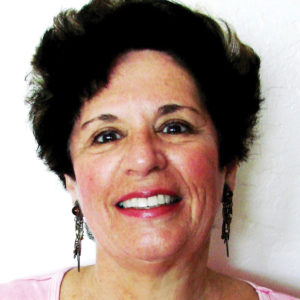
Judith Lang Zaimont
Judith Lang Zaimont's music is often cited for its immediacy, emotion and drama. Her distinctive style-strongly expressive, sensitive to musical color and rhythmically vital-is evident in even her early music. The New York Times described it as "exquisitely crafted, vividly characterized and wholly appealing," and perhaps for these reasons her music has consistently drawn performers from around the globe and several of her works have achieved repertoire status.
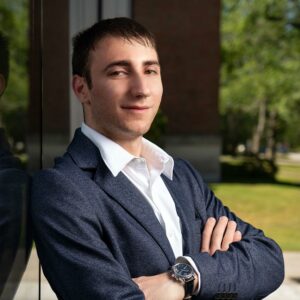
Sami Seif
Sami Seif is a Lebanese composer and music theorist. His music is inspired by the aesthetics, philosophies, paradigms, and poetry of his Middle-Eastern heritage. His work has been described as “very tasteful and flavorful” with “beautiful, sensitive writing!” (Webster University Young Composers Competition).
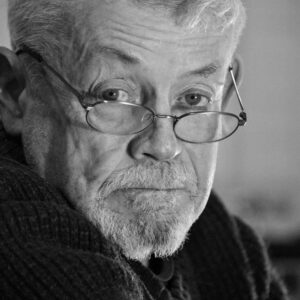
John Summers
John Summers began his professional composing career in 1973, writing music for schools for a touring theater company, where he produced every type of production, from educational musicals for young kids to setting curriculum poetry (Shakespeare, Eliot, etc) to music. This continued until 1977, and in the process, he visited every small and large town in the Eastern states of Australia.
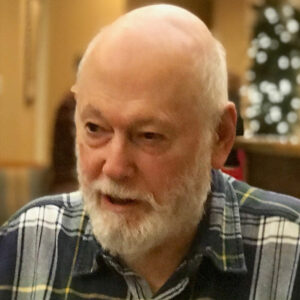
Jacob E. Goodman
Jacob E. Goodman (November 15, 1933 – October 10, 2021), founder of the New York Composers Circle in 2002, was Professor Emeritus of Mathematics at the City College of New York. He studied musical composition with, among others, Ezra Laderman and David Del Tredici. His works have been performed in Delaware, Nebraska, Toronto, Buenos Aires, and Tokyo, and various venues in both New York City and the Bay Area of California. Recent compositions include a set of variations for piano trio; three song cycles; a set of variations for orchestra on a Beethoven theme; a quintet for flute, piano, and strings; a set of intermezzi for piano; a prelude for saxophone and piano; two sets of variations for piano; a duo for cello and piano; a string quartet; and three bagatelles for piano; as well as the score for the documentary film Meet Me at the Canoe, produced for the American Museum of Natural History by his daughter Naomi Goodman-Broom.
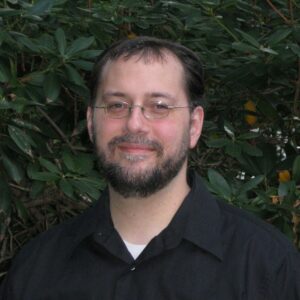
Daniel Gil
Daniel Gil is a composer, ethnomusicologist, producer, orchestrator, and performer. He is a graduate of Berklee College of Music and holds an MFA in composition from Vermont College of Fine Arts. Gil’s music has been described as “poignant and majestic” (Boston Globe), “beautiful and original” (Jerusalem Post), and that he “sounds like Greg Lake and Pete Townshend combined” (The Big Takeover) when singing and playing guitar with his electro-progressive band Raibard.
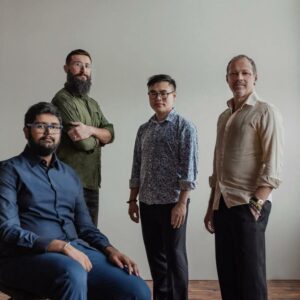
Sirius Quartet
Sirius Quartet combines exhilarating repertoire with unequaled improvisational fire. These conservatory-trained performer-composers shine with precision, soul and raw energy, championing a forward-thinking, genre-defying approach. Since their debut concert at the original Knitting Factory in New York City, Sirius has played some of the most important venues in the world, including Carnegie Hall, Lincoln Center’s Alice Tully Hall, the Beijing Music Festival, the Cologne Music Triennale, the Beethoven-Haus Bonn, Stuttgart Jazz, Musique Actuelle in Canada, the Taichung Jazz Fest — Taiwan’s biggest jazz event — and many others.
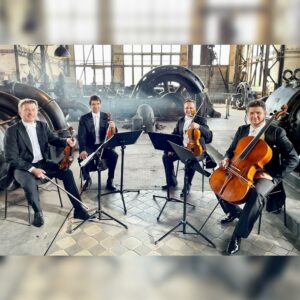
Benda Quartet
Since the Benda Quartet began performing in 2012 they have achieved a wide variety of musical successes and established themselves among highly respected Czech ensembles. Their first significant landmark was the concert debut they performed at the 60th Jubilee of the Janacek Philharmonic Orchestra in Ostrava in April 2014. The concert was recorded by Czech Radio and garnered a huge audience acclaim. Since then has the collaboration with the studio of Czech Radio continued on regular basis and resulted in a number of publicly appreciated recordings. The Benda Quartet have worked intensively together with the Janáček Philharmonic Orchestra and artist management agency Janáčkův Máj on numerous chamber music and educational projects.
The Harlem Quartet
Harlem Quartet has been praised for its “panache” in The New York Times and hailed in the Cincinnati Enquirer for “bringing a new attitude to classical music, one that is fresh, bracing and intelligent.” It has also won plaudits from such veteran musicians as Jazz at Lincoln Center woodwind virtuoso Ted Nash, who declared in a 2018 Playbill article, “Harlem Quartet is one of the greatest string quartets I have ever heard. They can play anything.” Since its public debut at Carnegie Hall in 2006, the ensemble has thrilled audiences and students throughout the U.S. as well as in the U.K., France, Belgium, Brazil, Panama, Canada, Venezuela, Japan, Ethiopia, and South Africa.
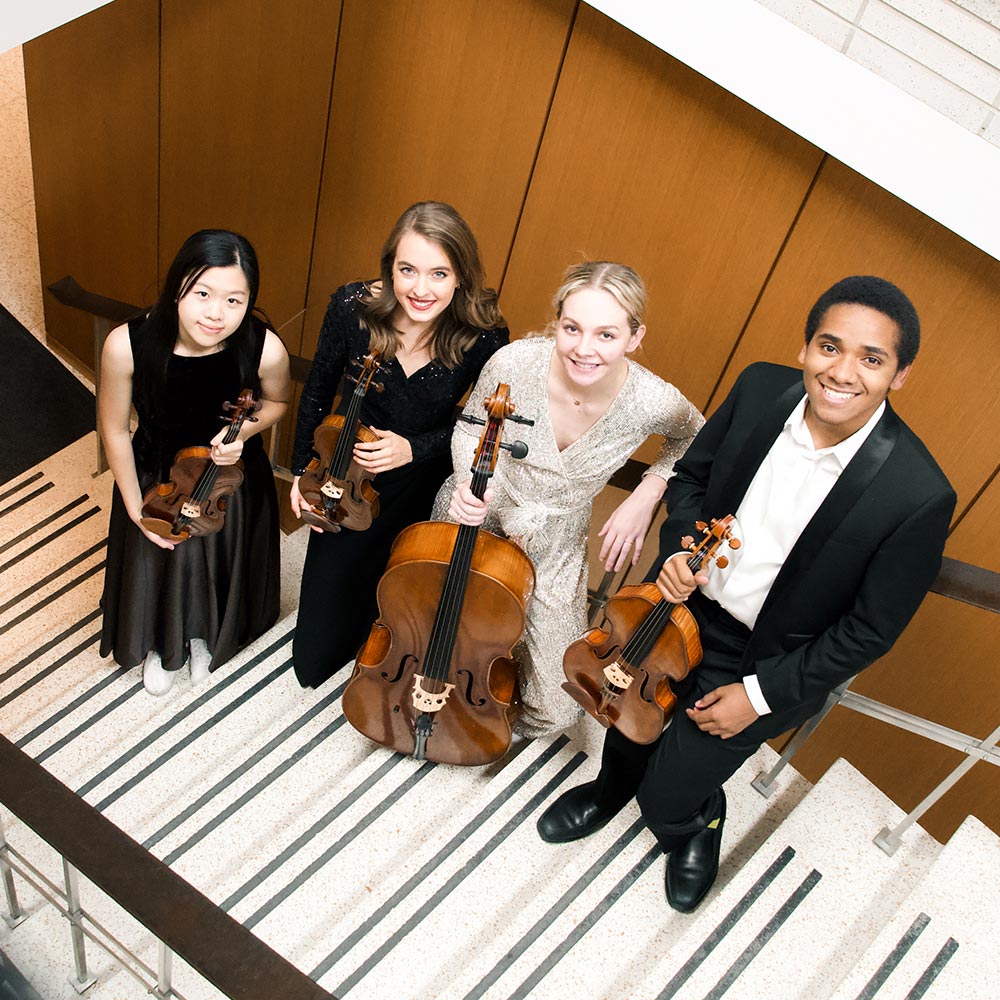
Elless Quartet
The Elless Quartet was formed in 2019 at the Cleveland Institute of Music. Comprised of members Ju-Eun Lee (violin), Megan Lin (violin), Marcus Stevenson (viola) and Cecelia Swanson (cello), the ensemble works with Si-Yan Li, Todd Phillips, and Philip Setzer, and have also performed in masterclasses for the Emerson, Orion, Dover, and Miami Quartets. The members have also participated in various music festivals, including the Bowdoin International Music Festival, Heifetz International Music Institute, Sarasota Music Festival, and Saint Paul Chamber Music Institute. Hailing from different parts of the world, the quartet strives to bring diversity into the classical music world.
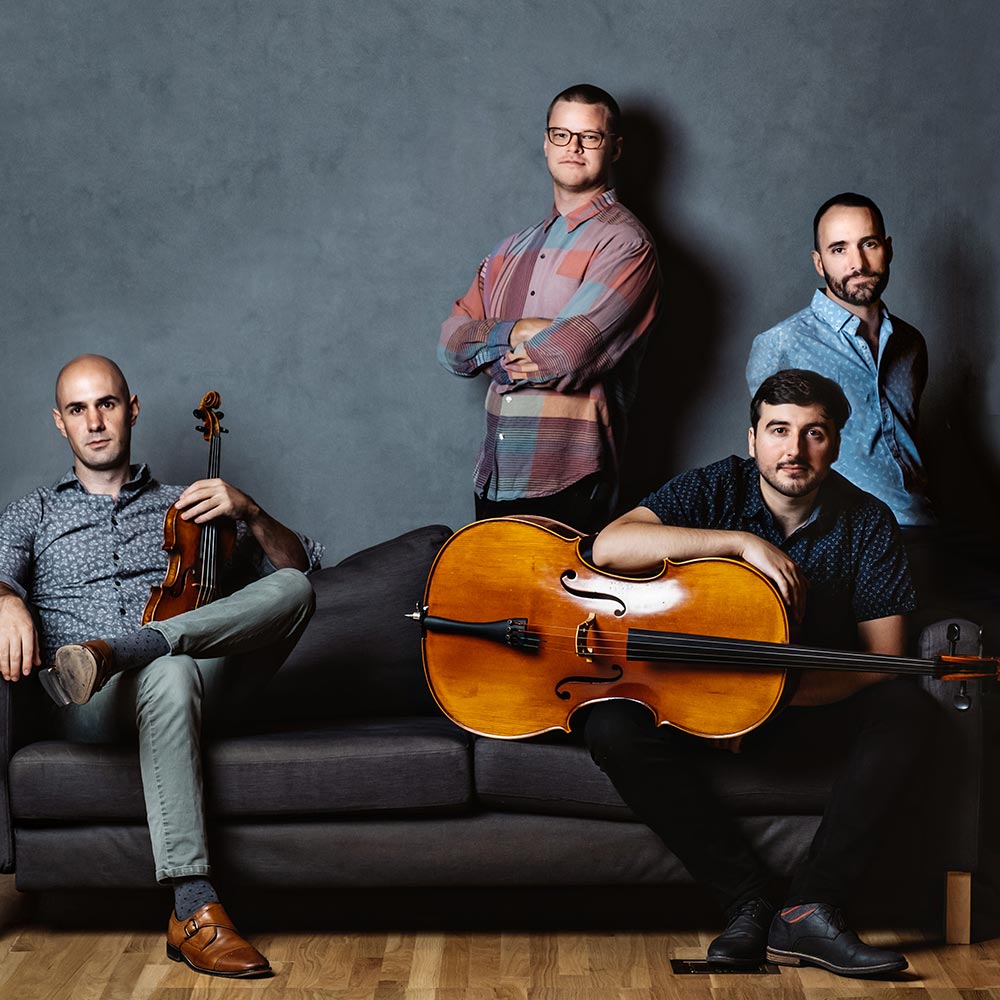
Invoke
Described as “…not classical but not, not classical – Invoke is beautiful, adventurous, American and immediately engaging” (David Srebnik, SiriusXM Classical Producer), Invoke strives to successfully dodge even the most valiant attempts at genre classification. The multi-instrumental quartet’s other not-nots encompass traditions from across America, including bluegrass, Appalachian fiddle tunes, jazz, and minimalism. Fueled by their passion for storytelling, Invoke weaves all of these styles together to form a unique contemporary repertoire, featuring original works composed by and for the group.
